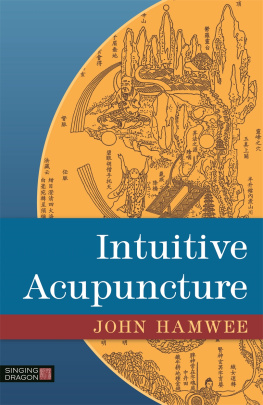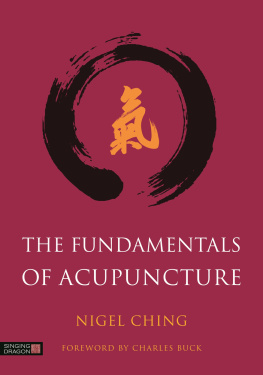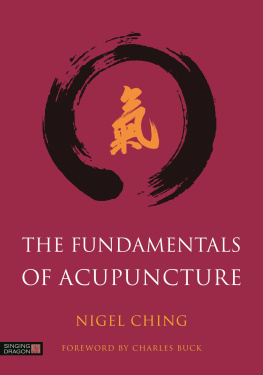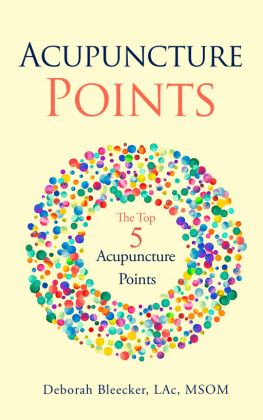Fletcher Kovich - Acupuncture Explained: Clearly explains how acupuncture works and what it can treat
Here you can read online Fletcher Kovich - Acupuncture Explained: Clearly explains how acupuncture works and what it can treat full text of the book (entire story) in english for free. Download pdf and epub, get meaning, cover and reviews about this ebook. year: 2018, publisher: CuriousPages Publishing, genre: Religion. Description of the work, (preface) as well as reviews are available. Best literature library LitArk.com created for fans of good reading and offers a wide selection of genres:
Romance novel
Science fiction
Adventure
Detective
Science
History
Home and family
Prose
Art
Politics
Computer
Non-fiction
Religion
Business
Children
Humor
Choose a favorite category and find really read worthwhile books. Enjoy immersion in the world of imagination, feel the emotions of the characters or learn something new for yourself, make an fascinating discovery.
- Book:Acupuncture Explained: Clearly explains how acupuncture works and what it can treat
- Author:
- Publisher:CuriousPages Publishing
- Genre:
- Year:2018
- Rating:3 / 5
- Favourites:Add to favourites
- Your mark:
- 60
- 1
- 2
- 3
- 4
- 5
Acupuncture Explained: Clearly explains how acupuncture works and what it can treat: summary, description and annotation
We offer to read an annotation, description, summary or preface (depends on what the author of the book "Acupuncture Explained: Clearly explains how acupuncture works and what it can treat" wrote himself). If you haven't found the necessary information about the book — write in the comments, we will try to find it.
Fletcher Kovich: author's other books
Who wrote Acupuncture Explained: Clearly explains how acupuncture works and what it can treat? Find out the surname, the name of the author of the book and a list of all author's works by series.
Acupuncture Explained: Clearly explains how acupuncture works and what it can treat — read online for free the complete book (whole text) full work
Below is the text of the book, divided by pages. System saving the place of the last page read, allows you to conveniently read the book "Acupuncture Explained: Clearly explains how acupuncture works and what it can treat" online for free, without having to search again every time where you left off. Put a bookmark, and you can go to the page where you finished reading at any time.
Font size:
Interval:
Bookmark:
Acupuncture explained
Clearly explains how acupuncture works
and what it can treat
Fletcher Kovich, Lic.Ac.
Published 2018 by CuriousPages Publishing, Bristol, United Kingdom
Copyright 2018 Fletcher Kovich
Updated 2 December 2018
The author asserts his moral right under the Copyright, Designs and Patents Act, 1988, to be identified as the author of this work. All Rights reserved. No part of this publication may be reproduced, copied, stored in a retrieval system, or transmitted, in any form or by any means, without the prior written consent of the copyright holder, nor be otherwise circulated in any form of binding or cover other than that in which it is published and without a similar condition being imposed on the subsequent purchaser.
ISBN 978 1 9164830 3 3 (ePub)
ISBN 978 1 9164830 0 2 (paperback)
ISBN 978 1 9164830 2 6 (hardback)
This book does not serve as a manual on how to do acupuncture or acupressure. Such treatments, whether by needling, moxibustion, cupping or pressure, should always be performed by a qualified Chinese Medicine acupuncturist.
The cover photo shows a monastery in Meteora, Northern Greece. The area has unusual mountainous formations with ancient monasteries perched on six of the peaks, and is a UNESCO World Heritage site.
This book is a reduction of the much longer book by the same author: Acupuncture Today and in Ancient China.
Acupuncture Explained retains the most essential content from each of the organ chapters in Acupuncture Today and in Ancient China, but leaves out the more academic content, including the detailed references to the early Chinese medicine classic text, the Nei Jing, and the many citations on other topics. Other, full chapters are also left out, such as those on the history of Chinese medicine; the detailed analysis of the Nei Jing theories of metabolism; and the analysis of their other notions and theories, such as the Five phase theory. And also left out are the chapters on the scientific investigations of acupuncture and the details of the authors own cutting-edge hypothesis on how acupuncture works.
The text that remains in Acupuncture Explained provides a clear, easy-to-read account of what acupuncture is, how it works, and what it can treatall expressed in terms that can be understood by todays readers. Hence, the text can be fruitfully read by any patient who wishes to understand their treatment, how it works and the thinking behind it; or read by acupuncture students who wish to quickly obtain this same overview of the subject, to complement their more detailed studies and to also understand how to explain the treatments to patients.
The earliest surviving record of Chinese acupuncture dates back more than two thousand years, in a series of ancient scripts known as the Nei Jing. These scripts describe the causes of illness (including mental and emotional factors) and how these affect the main organs. Once the organs become stressed, the scripts list the signs and symptoms that result. The meridians associated with each organ were also listed, and stimulating an acupuncture point (acupoint) on one of these meridians is able to correct the issue in the related organ.
In clinic today, over two thousand years later, all these same signs and symptoms are still routinely seen in patients, associated with stress (or illness) in a particular organ.
The following chapters are each dedicated to particular organs, and describe the lifestyle factors (including mental and emotional) that cause stress in those organs, and list the possible signs and symptoms that this produces. The acupuncture treatment is then described, and suggestions are given on how to avoid such illnesses in the future.
Chapter 8 provides detailed case histories covering many common conditions, from diagnosis through to the outcome of the treatments; and these are referred to throughout the above organ chapters.
Finally, the index lists all the signs and symptoms and conditions mentioned in the organ chapters.
The book may simply be read through, to gain an overview of Chinese acupuncture, what it can treat and how the treatment works. Or when you are interested in a particular condition or simply a single sign or symptom, this may be found by performing a search. This would direct you to the pages where the organ concerned is discussed. This would indicate which organ is producing the condition, the likely cause, how the condition could be treated with acupuncture, or alternatively, lifestyle adjustments that could be made to alleviate the condition.
Some signs and symptoms may appear in more than one organ chapter. In this case, you should read the other signs and symptoms listed for each of those organs, which may help to identify the main organ involved. When a selection of the signs and symptoms for a particular organ are present, this usually indicates that the condition is being produced by that organ.
The above approach is suggested as a guide to diagnosis, and to provide an insight into your health. If the signs or symptoms are pronounced, it would be advisable to consult a qualified practitioner of Chinese acupuncture to confirm the diagnosis and provide appropriate treatment.
Each organ chapter describes two organs, since those organs are closely associated with one another, and are both often affected when either of the organs in that pair is affected.
In Chinese medicine, the pancreas is usually called the spleen. This is due to a mistaken attribution of the organs in ancient times. However, the anatomical organ being referred to is the pancreas, and in this book I use the anatomically correct description (of pancreas), so as to avoid confusion when comparing this books content with contemporary physiology.
In contemporary physiology, the main functions of the pancreas are that it
- produces pancreatic juice, which contains enzymes that digest carbohydrates, proteins and fats (these enable the small intestine to absorb the nutrients into the blood stream);
- secretes the hormones insulin and glucagon to control the uptake of glucose, which is the bodys main fuel; and
- secrets the hormone pancreatic polypeptide, which is thought to produce the appetite.
The Nei Jing authors noticed that when the pancreas function was poor, any of the following signs and symptoms could be present. Usually, not all would be present, but only a selection. If about three are present, this would usually indicate a diagnosis of poor pancreas function.
- poor appetite (prefer to only eat small amounts);
- general weakness (and hence the tendency to avoid speaking), and feeling tired after eating;
- abdominal bloating and discomfort (particularly after eating), excess gas, frequent loose stools;
- intolerances for certain foods, such as dairy or wheat;
- poor sense of taste;
- cravings for sweet food;
- muscles of limbs are weak and soft (emaciated);
- tendency to bruise easily or have mild haemorrhages or purple spots or patches on the skin, blood in the stools, excessive menstrual flow or bleeding of the uterus;
- feeling a bearing-down sensation in the abdomen, possibly with prolapse of the anus or of internal organs such as the stomach, kidneys, uterus or bladder; and
- pain or discomfort anywhere along the pancreas or stomach meridian.
People with this condition would tend to be habitual thinkers or worriers, and all the above signs and symptoms would tend to be made worse after extended periods of heavy thinking or studying.
Next pageFont size:
Interval:
Bookmark:
Similar books «Acupuncture Explained: Clearly explains how acupuncture works and what it can treat»
Look at similar books to Acupuncture Explained: Clearly explains how acupuncture works and what it can treat. We have selected literature similar in name and meaning in the hope of providing readers with more options to find new, interesting, not yet read works.
Discussion, reviews of the book Acupuncture Explained: Clearly explains how acupuncture works and what it can treat and just readers' own opinions. Leave your comments, write what you think about the work, its meaning or the main characters. Specify what exactly you liked and what you didn't like, and why you think so.






